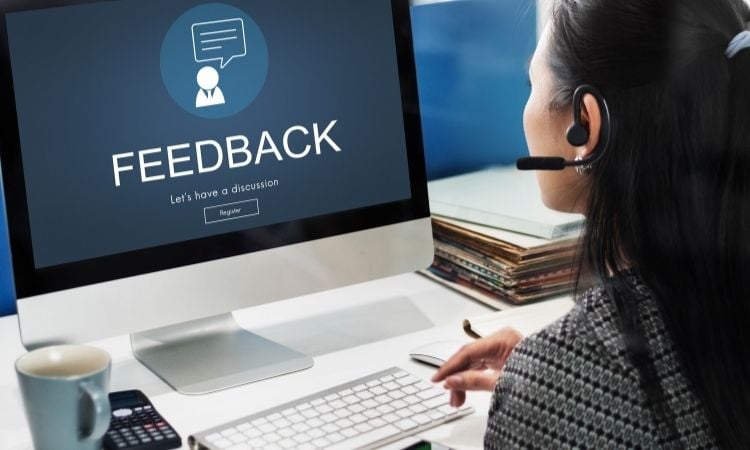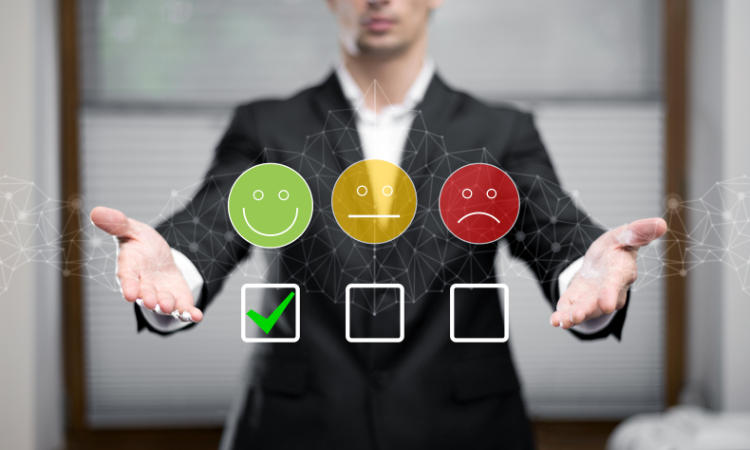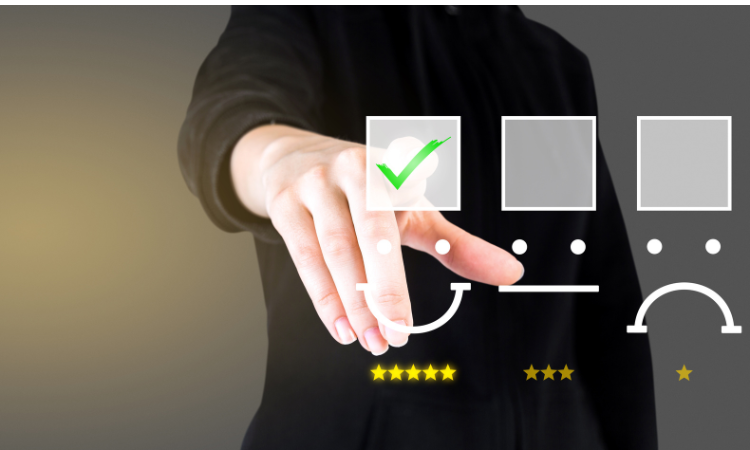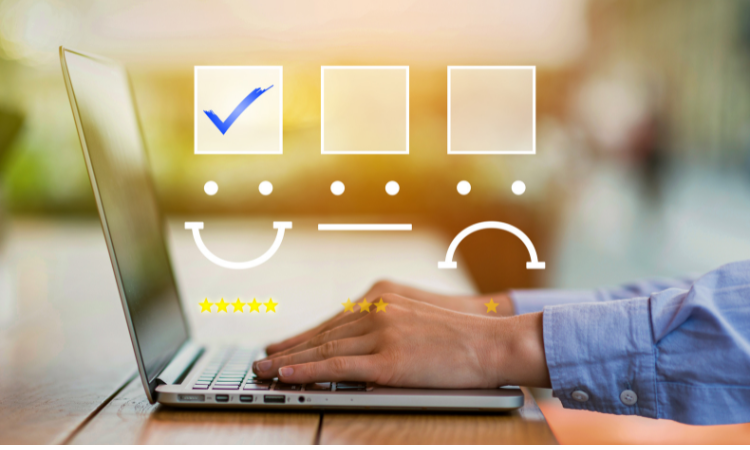With a large pool of SaaS companies and platforms appearing in the market, the SaaS industry has become more competitive than ever before in recent years. For a SaaS company, delivering a positive customer experience is often a key differentiator and forms a core part of its value proposition. This has given more power in the hands of the customers to choose among the various alternatives available in the marketplace. And this choice is often based on the Customer Experience they receive.
When you are in the SaaS industry, especially as a SaaS company, it is vital for you to consider the most important aspect of your products and services, which is Customer Experience. For a SaaS company, customer experience is central to its value proposition and long-term success. If you ignore this aspect, it directly affects your business in an adverse way and ultimately makes it difficult for your brand to survive in the market, forget about growing your business and attaining great success.
So if you want your business to grow, you have to engage with your customers, collect SaaS Feedback, and follow strategies to improve your product, and do everything you can to create amazing customer experiences. In this article, we will learn some great ways to improve SaaS Customer Experience and take your business to the next level.
Let’s start by defining SaaS Customer Experience and exploring its importance.
Measure User Feedback at various touchpoints in your product and use the User Insights to delight your customers.
TL;DR
-
SaaS CX = every touchpoint from trial → onboarding → support → renewal.
-
Do first: nail onboarding, unify omnichannel support, collect micro-feedback in-product, and close the loop.
-
Measure: TTV, activation, feature adoption + NPS/CSAT/CES + support resolution metrics.
-
Differentiate with Digital Customer Success playbooks, clear billing UX, strong incident comms, accessibility/localization, and thoughtful offboarding.
-
90-day plan: map journeys, launch micro-surveys with SLAs, ship top 5 fixes, announce via changelog.
-
Zonka Feedback captures in-moment product & support feedback, analyzes themes with AI, and automates loop-closing with alerts and workflows. You can schedule a demo to get more information on listening, acting, and improving CX with product feedback.
Elevate your SaaS Customer Experience⭐
Measure User Feedback at various touchpoints in your product and use the User Insights to delight your customers.

What is SaaS Customer Experience?
SaaS Customer Experience is the sum total of every interaction your customers go through with your products and services, customer success teams, and the overall brand. Understanding the customer's perspective throughout their journey is crucial, as it shapes their overall experience and influences satisfaction and loyalty. It involves your customers’ perceptions about what they go through at each touchpoint of their customer journey with your business.
SaaS Customer Experience includes customers’ free trial experience, buying experience, onboarding experience, website experience, experience of encountering issues and their resolutions provided by your support agents, and everything that your customers go through while dealing with your business. Mapping customer journeys and analyzing customer interactions at each touchpoint are essential for optimizing SaaS customer experience.
Let’s explore why it is necessary to focus on building great customer experiences.
Why SaaS Customer Experience Matters in 2025?
Providing good Customer Experience is vital for the growth of your business. If an amazing product brings in new customers, brilliant Customer Experiences are essential to make them stay with your business. Nowadays, customers consider CX to be the key factor that makes them stay with a business, even more than the product and price.
Studies suggest that 42% of the customers are willing to pay more for a great customer experience.
To understand the importance of Customer Experience, you first need to understand that the whole purpose of the existence of a SaaS business is to provide easy and convenient experiences to the users. Doing a SaaS business means you are selling Software as a Service, and there is no point in such a business where customers are not happy with that service.
Using the help of SaaS development services, focus on creating a smooth and effective onboarding process, offering proper product knowledge and training, accessible self-help resources, and responsive support. Therefore, investing in top-notch SaaS app development is crucial to ensure a seamless user experience and customer satisfaction.
-
Building better customer experiences helps you achieve your business goals like:
-
Better Customer Loyalty and long-lasting customer relationships
-
Brand loyalty through memorable and consistent customer interactions
-
Competitive advantage in the market
-
Reduced cost of acquiring new customers (as it is costlier than retaining the existing customers)
-
Better products and services, which eventually brings in more business and higher revenue
Optimizing customer experience throughout the customer lifecycle increases customer lifetime value and encourages repeat purchases.
So it is not just an added advantage, but a necessity to provide your customers with brilliant Customer Experiences.
Let’s learn some great ways to improve CX for your customers.
Understanding User Expectations
Understanding customer expectations is the foundation of delivering a successful customer experience in the SaaS industry. Today’s customers are more informed and discerning than ever, with their expectations shaped by previous experiences, peer recommendations, and the promises made by SaaS companies in their marketing. To truly understand customer expectations, SaaS companies must go beyond assumptions and actively collect and analyze customer data from multiple sources—such as feedback surveys, online reviews, and social media conversations.
By examining this data, SaaS companies can identify patterns in customer behavior and sentiment, gaining valuable insights into what customers need and want at every stage of the customer journey. This deeper understanding enables SaaS providers to anticipate customer needs, proactively address concerns, and deliver experiences that exceed expectations. Prioritizing customer expectations and adopting a customer-centric approach not only drives customer satisfaction but also strengthens customer loyalty and retention. Ultimately, understanding and meeting customer expectations is key to building lasting relationships and achieving long-term success in the competitive SaaS market.
Developing a SaaS User Experience Strategy
A well-defined customer experience strategy is essential for SaaS companies aiming to deliver consistent, personalized experiences across the entire customer journey. Developing a successful customer experience strategy starts with a clear understanding of customer expectations and pain points. SaaS companies should map out the customer journey, identify areas where customers may encounter friction, and design solutions that address these challenges.
To create an effective customer experience strategy, SaaS companies need to articulate their vision, mission, and goals for customer experience. Establishing key performance indicators (KPIs) allows teams to measure progress and success, ensuring that efforts are aligned with business objectives. The strategy should also include a robust plan for gathering and acting on customer feedback, enabling continuous improvement and adaptation as customer needs evolve.
By investing in a customer experience strategy, SaaS companies can differentiate themselves from competitors, increase customer loyalty, and drive long-term growth. A strategic approach ensures that every interaction along the customer journey is intentional, meaningful, and designed to deliver value, resulting in increased customer satisfaction and stronger customer relationships.
Creating a Customer-Centric Culture
For SaaS companies, creating a customer-centric culture is critical to delivering a truly exceptional customer experience. A customer-centric culture means putting customer needs, values, and expectations at the heart of every decision and action. This approach empowers employees at all levels to prioritize customer satisfaction and take ownership of the customer experience.
Building a customer-centric culture starts with leadership setting the tone and providing ongoing training and education to ensure every team member understands the importance of customer experience. Recognizing and rewarding customer-focused behaviors encourages employees to go the extra mile for customers. Additionally, fostering collaboration and knowledge sharing across departments helps break down silos and ensures that everyone is working together to meet customer needs.
When SaaS companies embrace a customer-centric culture, they build trust and loyalty with their customers, turning satisfied users into advocates. This not only drives customer retention and growth but also creates a positive feedback loop where customer insights continually inform and improve the business. Ultimately, a customer-centric culture is the backbone of long-term success in the SaaS industry.
Top Ways to Improve your SaaS Customer Experience
- Focus on building great Onboarding Experience
- Provide Omnichannel Support to your customers
- Collect SaaS Feedback from the customers
- Leverage Feedback to improve your products
- Measure and Improve Customer Support Experience
- Provide Great Website Experiences
- Measure Customer Success Metrics and work on them
- Exceed Customers’ Expectations to delight them
Let’s learn more about these effective tips that are at the core of voice of customer methodologies to improve your SaaS Customer Experience. Improving SaaS customer experience not only boosts retention but also drives customer acquisition by reducing barriers and increasing conversion rates.
1. Focus on building GREAT Onboarding Experience
‘You never get a second chance to make the first impression.’ - The quote by British writer Andrew Grant applies perfectly when we talk about customer Onboarding Experience. An Onboarding Experience can make or break a business because onboarding has a large impact on the overall Customer Experience.
In the realm of a subscription based business, the gravity of an initial encounter escalates further. It’s critical to recognize that each subscriber embarks on a journey that either reaffirms their choice or prompts reconsideration.
Creating user personas helps tailor the onboarding process to different customer needs, ensuring that each type of user receives relevant guidance and support.
So always focus on making your onboarding process smooth and effective for your customers. A good Onboarding process creates a lasting impression on the customers and they become more loyal towards your brand. Whether you’re expanding globally or serving diverse markets, localizing your onboarding experience with a professional computer-assisted translation software ensures all your customers feel valued regardless of language or region. You can take some simple steps to make your onboarding effective.
-
Always be welcoming for the customers as soon as they buy your product’s subscription.
-
Provide proper product knowledge and training to your customers to make product usage experience smoother for them.
-
Offer resources and training that help customers learn how to use the product effectively, so they can achieve their goals and succeed.
-
Ensure your SaaS terms of service agreement is clear and easily accessible during the signup process.
-
Provide knowledge sharing documents and make self-help easily accessible to the customers.
-
Provide good and adequate support wherever they need it to use the product.
-
Always collect Onboarding Feedback to ensure that they received a great onboarding experience, and make improvements whenever required.
Providing a great Onboarding Experience is essential to make sure that your customers should never feel that they have made a wrong choice by choosing your product or paying for its subscription.
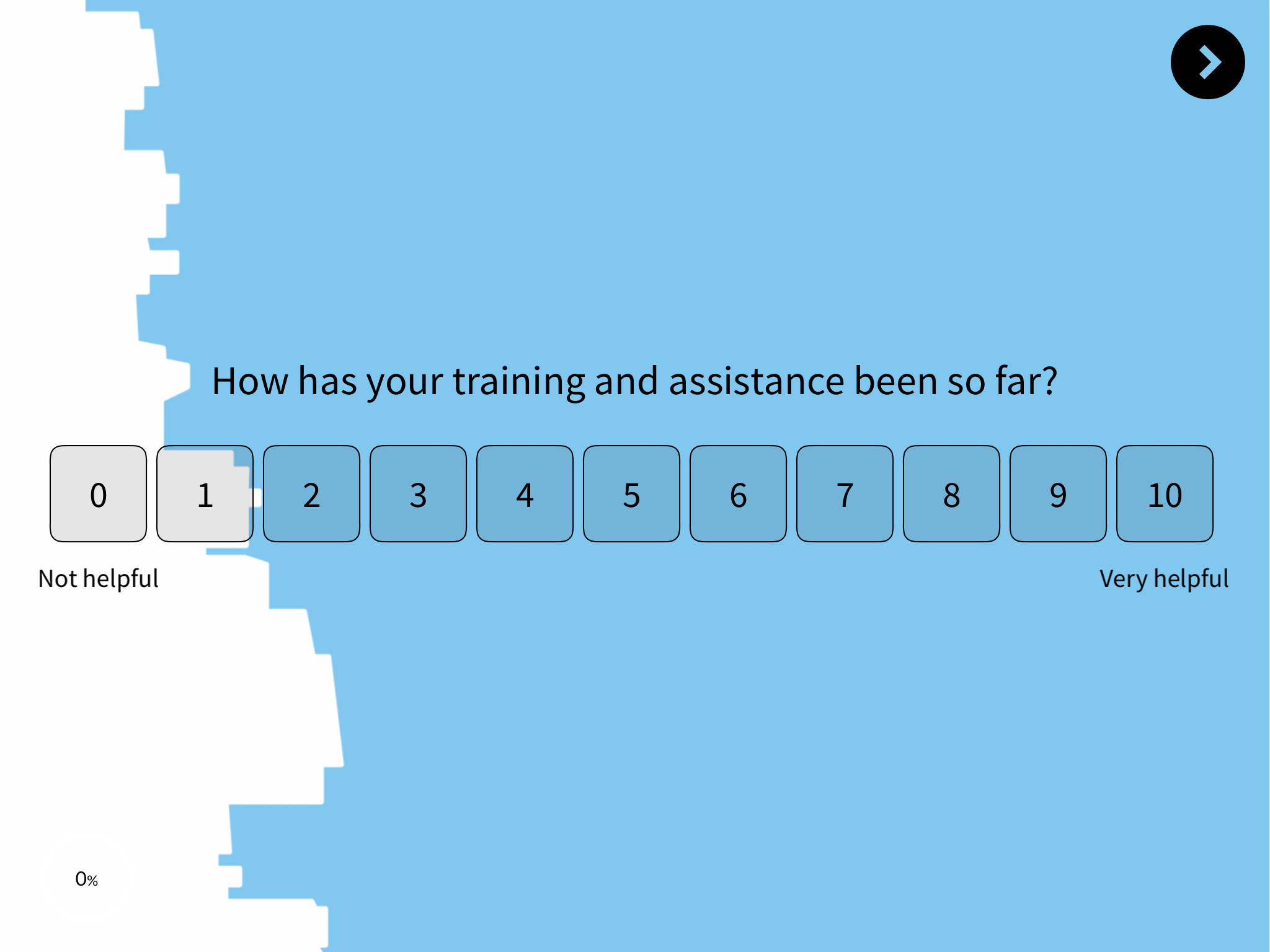
2. Provide Omnichannel Support to your Customers
Many companies emphasize on marketing their products through websites and other channels and providing easy buying experiences to the customers. However, the market has risen a step ahead and now customers expect easy and quick support whenever they need and through the channel of their own choice. Efficiently managing customer inquiries across all support channels is now critical to meeting these expectations.
This raises the need to provide Omnichannel support to the customers, which means being available for the customers on almost all the available channels to resolve their queries and concerns. Already, many companies are adopting an omnichannel approach, and if you don’t do so, it will be hard to withstand the competition.
Here are some common channels where you should make support available for the customers.
-
Self-service Knowledge Base - It helps the customers to resolve their issues on their own with the help of knowledge material like help articles, blogs, and details of your product on your website. With AI knowledge management, you centralize research, accelerate self-service, and prevent siloed answers.
-
Email Support - Ensure that every customer email is responded to in the specified TAT (Turn Around Time). You can also automate email responses to acknowledge your customers that you have received their email and that your team is working on their concerns.
-
Social Media - Do have a social media official handle on popular social media platforms like Facebook, Instagram, and Twitter. Respond to every query or concern that comes in the form of comments and mentions on social media.
-
Live Chat - Provide Live Chat support where your chat agents are present to do live chatting with your customers and provide them the support they need.
-
Chatbots - AI powered Chatbots or Virtual Assistant are also great and one of the latest ways to support the customers 24/7 on their common issues and queries.
-
Helpdesk - Provide a Helpdesk number to your customers where they can call and talk to your customer service executives to seek support in case of technical difficulties.
-
Technical Support - Offer a dedicated technical support channel to assist customers with complex product issues, troubleshooting, and specialized guidance.
High-quality support interactions across these channels are essential for delivering a seamless customer experience and ensuring operational efficiency.

3. Collect SaaS Feedback from the Customers
When you are done with Onboarding and the product users have finally started using your full-fledged product, making interaction, seeking support, getting queries, and concerns resolved, you should then focus on collecting SaaS Feedback from your customers. Gathering feedback at multiple touchpoints is essential to understand customer needs and identify areas for improvement. You can collect Customer Feedback at various touchpoints to know how the customers are feeling about the experiences they are having with your products and services.
Customer Feedback in SaaS is vital to improve Customer Experience because feedback is the only way to know how your customers perceive their experience with your products, services, and the overall brand. Feedback can provide valuable insights into customer questions and concerns, helping you address their needs more effectively. If you are not able to know whether your customers liked their experience or not, how will you improve it? Collecting real customer insights through feedback is any day better than doing guesswork and taking actions based on hit and trial methods. When you collect feedback, you get to know whether and how satisfied your customers are with your product and services. When you get this meaningful information, only then you can work in the direction of improving SaaS Customer Experience
With the help of an effective SaaS Feedback tool, you can create effective surveys and collect feedback through multiple channels and survey types like,
-
Email Surveys
-
SMS Surveys
-
In-Product or In-App Surveys
-
Email Signature Surveys
You can send surveys both as Transactional Surveys which are triggered based on events and transactions done by the customers, as well as Relationship Surveys, which are sent periodically like monthly, quarterly, or annual surveys to track the ongoing customer relationships.
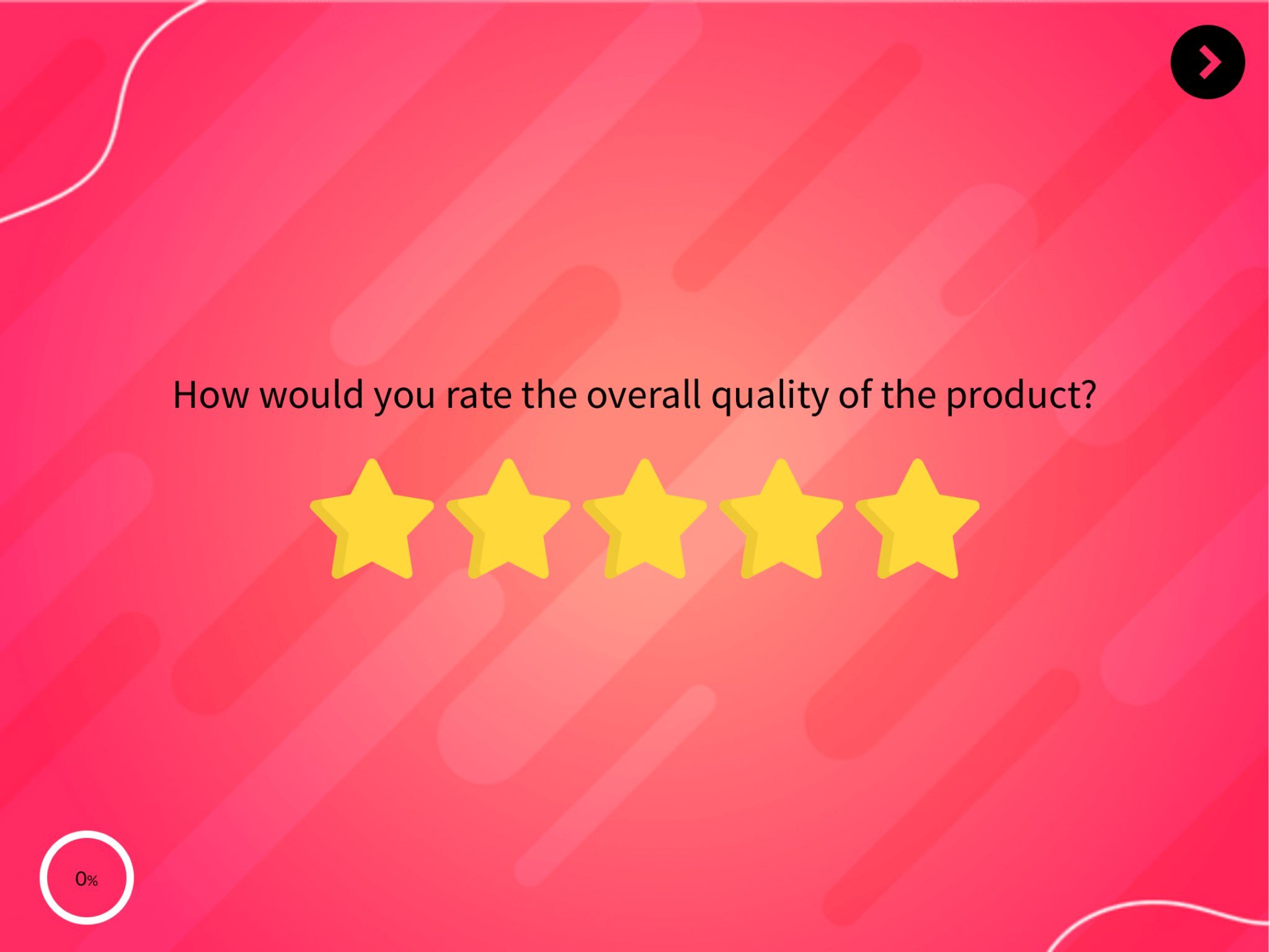
4. Leverage Feedback to Improve your Products
Now when you have collected Customer Feedback to improve Customer Experience, the next step is to take action on feedback.
-
Respond to Customer Feedback - Respond to every feedback you have received so that customers get to know that you are listening to them and taking them seriously. Thank the customers who shared positive feedback, ask for suggestions from the customers who shared neutral feedback, and ask them what you can do to improve their experience, and apologize to the customers who shared negative feedback. Ask them where things went wrong and take appropriate actions instantly to improve Customer Experience.
-
Identify Areas of Improvement - Analyze all feedback data and identify the key areas of improvements in your product. Use this feedback to understand customers perception of your service and pinpoint areas where customer friction occurs during onboarding, support, or engagement. Look for the common issues that most of your customers are facing. Set your priorities and categorize those issues into ‘easy to be done actions’ and ‘actions requiring more effort and time’. Then work accordingly as per priority and ease of taking action.
-
Look for Customers’ Suggestions - Look for valuable suggestions you may have received in the feedback data. Although, you cannot follow every suggestion, you can politely deny where you can’t do it. However, look for suggestions that you can follow and which can actually help you improve your products and services for the customers.
-
Keep Your Customers Informed - Always keep your customers informed about the progress on their feedback and the actions you are taking. Focus on closing the feedback loop effectively. If you are following some good suggestions and making changes to your product for betterment, do inform personally to those customers who shared those suggestions. This will make them feel really good!
Proactively addressing issues based on feedback is a cost-effective way to improve customer experience, as it helps prevent problems from escalating and reduces support costs.
5. Measure and Improve Customer Support Experience
When we talk about SaaS Customer Experience, it is not confined to your product only. It also includes the Customer Experience with your Support Team. Training your customer service representatives to handle support interactions effectively is essential for delivering a positive experience. So don’t forget to collect Customer Feedback about every customer interaction with your support team. Also, don’t forget to collect the data in the support ticket. There may be some executives who are rude to the customers, or some who couldn’t help the customers due to lack of process knowledge. Maybe your customers had to wait for long to reach your executives and directly have a word with them, which would have added to the frustration of your customers.
Customer Support Feedback will help you find such issues and track the overall performance of your support team and service executives. As a SaaS provider, delivering excellent support is crucial for customer satisfaction. Identify such issues and loopholes in your support process and take action like better training of employees and easy IVR options to seek human support in order to make your support services better for the customers.
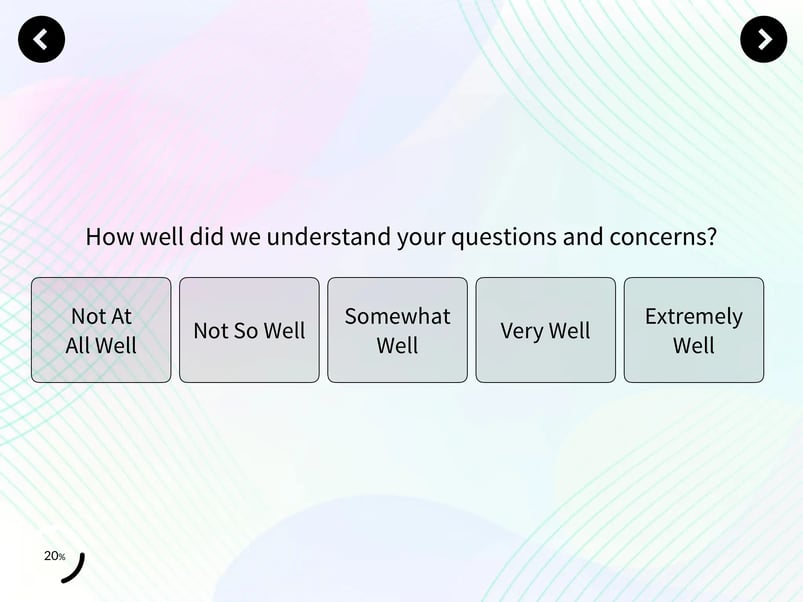
6. Provide Great Website Experiences
Website Experience is one of the core experiences of your SaaS users. Whenever your customers explore your product, your website is the first thing most of them look for. It is the basic source of information to educate the customers about the product. Understanding how customers interact with your website to learn about your SaaS products is crucial for optimizing their experience and driving engagement. So it is essential to focus on the website experience as well.
The design of the website must be attractive enough to engage your website visitors. Make sure that your website is not overloaded with unnecessary pop ups and advertisements that hamper your visitors from getting the information they need. Also, make all the information easily available to the customers so they find what they are looking for. The website should clearly showcase the features and benefits of your SaaS products to help visitors make informed decisions.
With the help of an effective and multichannel Feedback Software, you can also collect Website Feedback to gauge and improve Website Experience of the visitors.
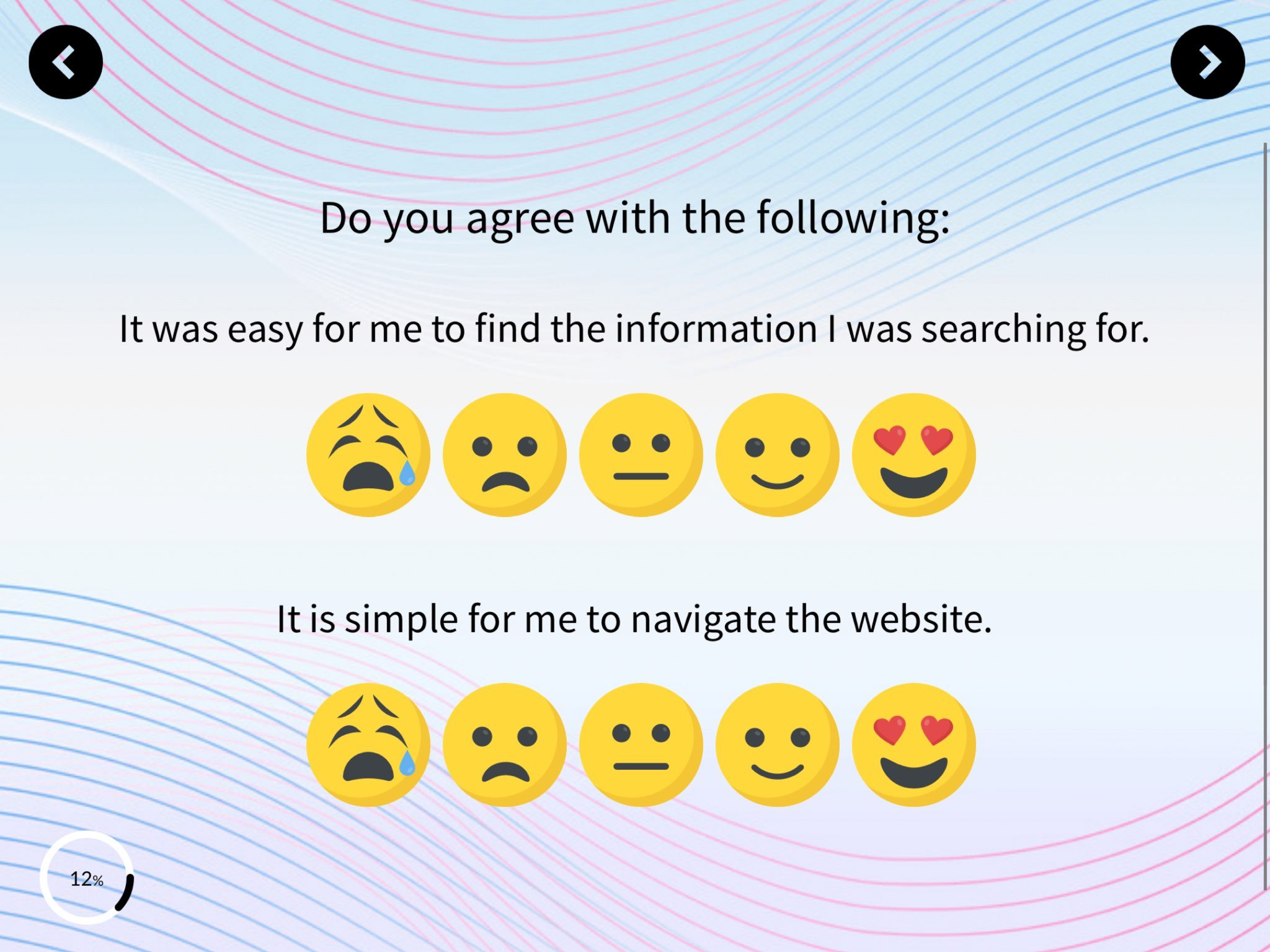
7. Measure Customer Success Metrics and Work on Them
Customer Success Metrics are a great way to gauge Customer Experience. It is important to measure these metrics across your entire customer base to ensure you are capturing a complete view of customer loyalty, satisfaction, and effort. With the help of powerful CX metrics like NPS, CSAT, and CES; you can easily measure Customer Loyalty, satisfaction, and customers’ perceived efforts to get a job done.
-
Net Promoter Score (NPS) - NPS or Net Promoter Score is one of the most common metrics that help you gauge Customer Loyalty by simply asking your customers to rate their experience on the basis of their likeliness to recommend your product or business to their friends and known ones on a scale of 0 to 10.
-
Customer Satisfaction (CSAT) Score - Customer Satisfaction (CSAT) score helps you measure customers’ satisfaction levels with respect to your product and services, and their various aspects by asking them to rate their experience on a five-point rating scale.
-
Customer Effort Score (CES) - CES or Customer Effort Score helps you measure customers’ perceived efforts to get their job done and issues resolved while using your products and services. In a CES survey, customers are asked how much they agree that your company helped them enough to handle their issues.
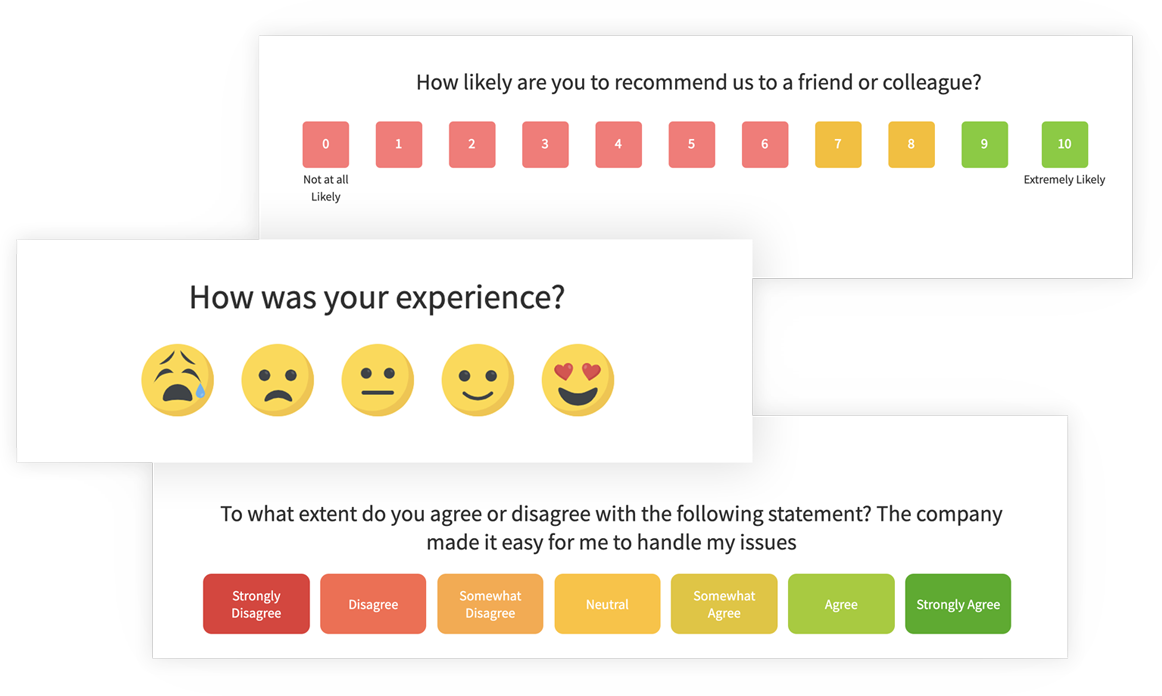
8. Exceed Customers’ Expectations to Delight Them
Customer Satisfaction is necessary to survive and grow in the market, but when you want to create amazing experiences in a competitive market, you have to rise above mere necessity and provide more to the customers. Here comes the need of ensuring Customer Delight. Keeping customers happy is essential, as it not only exceeds their expectations but also fosters increased customer loyalty. When you do more than expected to exceed customers’ expectations, it makes them delighted.
This feeling of being delighted induces loyalty among the customers towards your business and creates long-lasting relationships with them. You can adopt simple techniques to reach customer delight.
-
Provide discounts and small free bees like an extended validity, latest feature for free for some days, discount on subscriptions.
-
Reward your loyal customers with discounted membership prices, and small coupons.
-
Provide extraordinary support and services to the customers. Train your support team to be more polite and serving for the customers.
-
Provide extremely user-friendly website experience to the customers so that they can easily get the information they need and help themselves from your website.
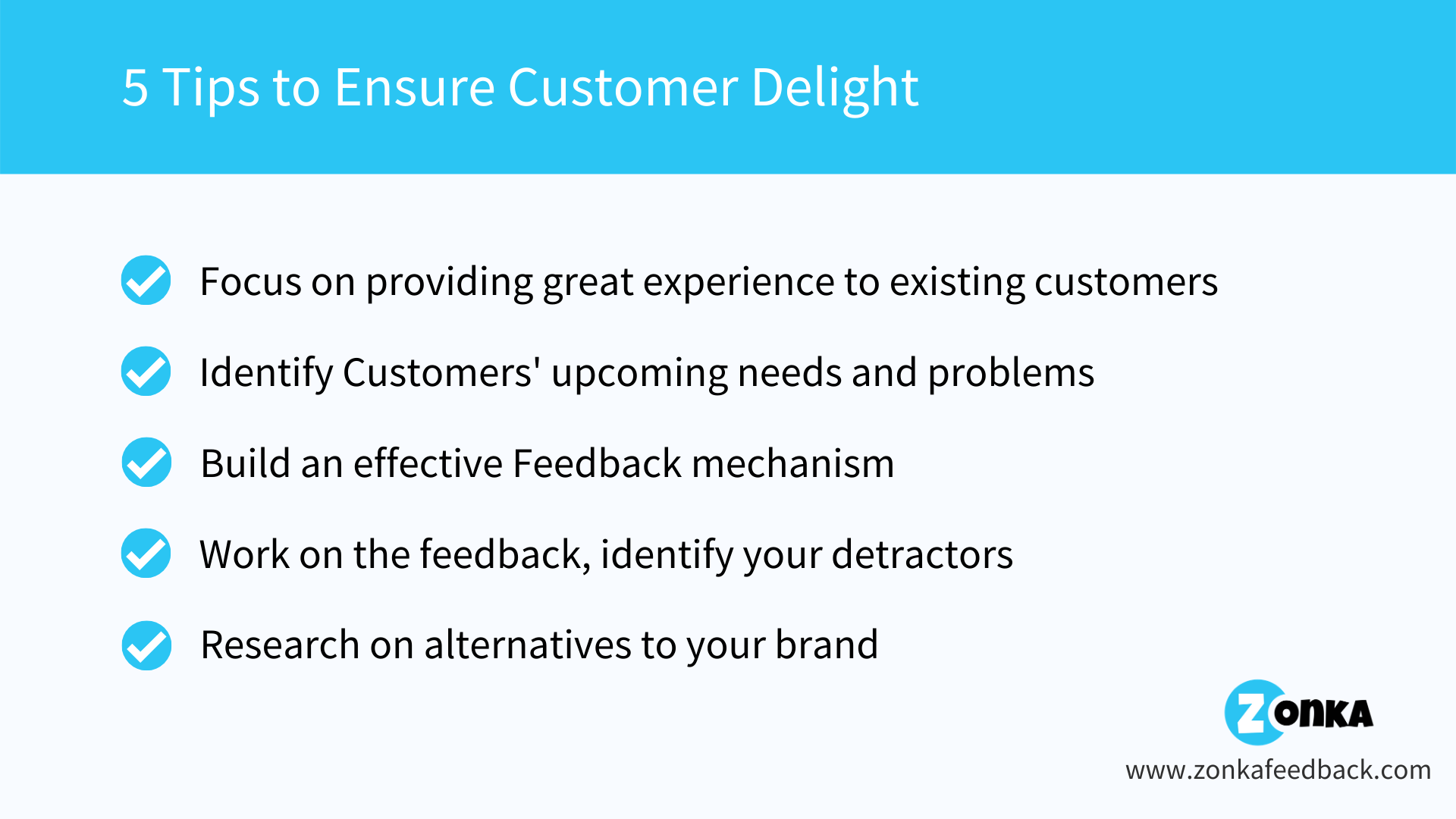
Personalizing the Customer Experience
Personalization is a powerful way for SaaS companies to enhance customer satisfaction, loyalty, and retention. By tailoring the customer experience to individual needs, preferences, and behaviors, SaaS providers can make every interaction feel relevant and valuable. Leveraging customer data and analytics, companies can gain insights into user behavior and deliver personalized content, recommendations, and offers that resonate with each customer.
Personalization can be implemented across various channels, including targeted email campaigns, customized in-app messaging, and relevant social media interactions. For example, SaaS companies can use onboarding data to send helpful tips based on a customer’s specific use case, or recommend new features that align with their usage patterns. By making customers feel understood and valued, personalization increases engagement, drives conversions, and strengthens the overall customer relationship.
In a crowded SaaS market, delivering a personalized customer experience sets companies apart and ensures that customers remain satisfied and loyal over the long term.
Using Customer Journey Map
Customer journey mapping is an essential tool for SaaS companies seeking to understand and improve the customer experience. A customer journey map visually outlines every step and interaction a customer has with a SaaS product or service, from initial discovery through onboarding, usage, and ongoing support. By mapping the entire customer journey, SaaS companies can identify key interactions, pain points, and opportunities for improvement.
Customer journey mapping enables SaaS providers to collect data and feedback at each stage, helping them understand customer sentiment and behavior in context. This deeper understanding allows companies to develop targeted strategies that address specific customer needs and expectations, resulting in a more seamless and satisfying experience. Additionally, journey mapping helps teams prioritize improvements, innovate new solutions, and ensure that every touchpoint aligns with the company’s customer experience goals.
By leveraging customer journey mapping, SaaS companies can create a more personalized, efficient, and enjoyable experience that drives customer satisfaction, loyalty, and long-term success.
How to Measure SaaS Customer Experience (Quick Map)
|
Goal |
Where to Measure |
What to Use |
|---|---|---|
|
Loyalty & advocacy |
Quarterly |
NPS survey |
|
Moment satisfaction |
After key events (onboarding, shipping a feature, support closure) |
CSAT |
|
Ease of resolution |
Post-support |
CES |
|
Product maturity |
Monthly |
Activation, TTV, adoption, DAU/WAU |
|
Risk |
Rolling |
Churn risk signals (ticket volume, usage drop, low NPS) |
30-60-90 Day Implementation Plan
Days 0–30 (Foundation)
-
Map journeys for top 2 personas.
-
Launch onboarding checklist + Day-0/Day-2 emails.
-
Set up post-ticket CSAT/CES and a quarterly NPS.
-
Publish/update top 20 KB articles.
Days 31–60 (Instrumentation)
-
Add in-app micro-surveys to 3–5 key flows.
-
Start feedback tagging & theming; weekly review.
-
Define SLAs and routing rules; publish them.
Days 61–90 (Optimization)
-
Ship top 5 improvements driven by feedback.
-
Launch a changelog and close-the-loop messages.
-
Pilot a customer champions program with 10 accounts.
Common Pitfalls (and Fixes)
-
Too many questions → Keep micro-surveys to 1–2 questions.
-
Collecting but not acting → Weekly theme reviews, owners, deadlines.
-
No loop closure → Proactively inform customers when their feedback ships.
-
One-size-fits-all onboarding → Tailor MPV by persona/use case.
-
Support hidden behind forms → Clear paths to real humans for complex issues.
Conclusion
Customer Experience is the core of your SaaS business. If you want to grow your business, you have to keep making efforts to improve your customers' experiences continuously. To know how they perceive their experience, it is a prerequisite to collect Customer Feedback.
You should use an effective SaaS Survey Software like Zonka Feedback to collect Customer Feedback. It helps you easily create powerful feedback surveys for all touchpoints in the customer journey, and share them to your customers across multiple channels. It also helps you take action on feedback and close the feedback loop effectively to improve Customer Experience.
You can schedule a demo to see how it works for your business.


